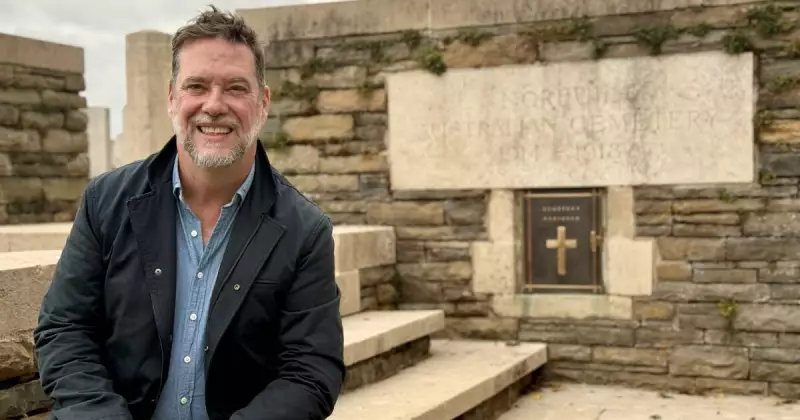
Each year, increasing numbers of Australians embark on journeys their ancestors never imagined possible - travelling to distant battlefields where Anzac soldiers fought and fell during wartime conflicts.
The growing appeal of battlefield tourism
As Remembrance Day approaches, this expanding travel trend reveals something significant about how modern Australians connect with their history. With the original Anzacs now gone from living memory, walking the actual battlefields has become one of the most powerful ways to comprehend what occurred and why it remains relevant today.
Historian Mat McLachlan, who operates Mat McLachlan Battlefield Tours, has witnessed substantial growth in this sector over his twenty years in the industry.
"While battlefield touring remains a niche travel experience, it's a broad niche," Mr McLachlan explained. "A large number of Australians consider visiting a foreign battlefield as a must-do experience sometime in their life, especially for Anzac Day."
Personal connections drive the experience
The attraction to these sites is profoundly personal for many travellers. People follow in the footsteps of relatives who served, locate graves they've only seen in photographs, and stand on terrain that shaped both family histories and national identity.
But visitors also seek to understand the past in ways that books and documentaries cannot capture. "There's something visceral about walking up Shrapnel Valley at Gallipoli, or standing in a preserved trench on the Somme, that makes the history immediate and real," Mr McLachlan noted.
While Gallipoli maintains its position as Australia's most iconic battlefield, Australian travellers are increasingly interested in visiting all locations where Australians have fought - ranging from the Western Front to Vietnam, and from Crete to Kokoda.
From Gallipoli to the Western Front
At Gallipoli, visitors quickly understand the immense challenges faced by Anzac soldiers. No matter which direction people walk from Anzac Cove, their path inevitably leads uphill.
"It doesn't take much walking to understand why this campaign was doomed from the start," Mr McLachlan observed, recalling his first visit twenty-five years ago as a backpacker with photocopied pages from the Australian Official History as his only guide.
After a full day under intense sun, with skin scratched by thorns and exhausted legs from climbing steep cliffs, he stumbled into the top of Second Ridge, the site of the original front line. He had followed the same route taken by the Anzacs on the first Anzac Day, gaining painful insight into why this ground proved impossible for an invading army to capture.
Visiting the Western Front presents different challenges - less physically demanding but equally emotionally draining. At Villers-Bretonneux, the Australian National Memorial displays the names of nearly 11,000 Australians with no known grave.
In the town's Victoria School, children have studied beneath the inscription "N'oublions jamais l'Australie" - meaning "Never Forget Australia" - since 1927.
At Belgium's Ypres Salient, Tyne Cot Cemetery contains 1,369 Australian graves, more than any other war cemetery worldwide. Standing at Passchendaele where Anzacs fought through mud and destruction in 1917, or at Hill 60 where Australian tunnellers detonated a massive underground mine that blew away half the hill, the scale of sacrifice transcends mere statistics.
"The significance isn't lost on the local people - each evening at the Menin Gate in Ypres, a chorus of buglers plays the Last Post, a daily ceremony that has continued unbroken since 1928," Mr McLachlan said.
Vietnam's perspective and Remembrance Day significance
Vietnam offers another dimension to the Anzac narrative. At Long Tan, a handful of veterans still guide tours through the rubber plantation where 108 men from D Company, 6RAR, withstood thousands of Viet Cong fighters in 1966.
"It's a story far removed from the experience of their grandfathers on the Somme in 1916 or their fathers at Kokoda in 1942, but no less confronting when you walk the ground and see just how easily victory could have turned to disaster," Mr McLachlan explained.
While Remembrance Day serves as the primary day of war commemoration overseas, in Australia it sometimes receives less attention than Anzac Day. "But we shouldn't overlook it. Remembrance Day marks the moment the First World War ended, and now honours service and sacrifice in all wars. It's a vital day of respect and remembrance," he emphasised.
This perspective increasingly influences how Australians approach battlefield tourism. What began mainly as Anzac Day pilgrimages to Gallipoli has evolved into year-round travel, with visitors seeking to understand the complete scope of Australian military history across multiple conflicts.
Improved access fuels growth
The expansion has been supported by better accessibility. Regular tours now operate with expert historians who explain not only what happened but why it mattered. Shorter tours with frequent departures make it simpler to include battlefield visits within European holidays. Audio guides and mobile applications enable independent exploration, while private tours can trace specific family histories or concentrate on particular battles and units.
Family and Anzac history research has become more straightforward through resources like the National Archives, which holds digital copies of all World War I and most World War II service records, and the Australian War Memorial. This means travellers can arrive at battlefields equipped with detailed knowledge about where their relatives served, which battles they fought in, and often where they're buried or commemorated.
As Remembrance Day approaches, Australians will gather at memorials throughout the country. But for growing numbers, genuine remembrance means travelling to where history unfolded - to Gallipoli's beaches, to fields in France and Belgium, to Vietnam's jungles.
"Because when you stand on that ground, walk those ridges, see those names carved in stone, the story catapults itself from the dusty shelves of history into something tangible, something real, something personal," Mr McLachlan reflected. "It's a profound experience, and I can't wait to go back."





